Odoo PLM Module - Product Life Cycle Management
Odoo PLM Module – Product Life Cycle Management is developed specifically for the Engineering Department and is used to keep track of BOM revisions, Trunky Product Lifecycles based on Engineering Change Orders, and Product Life Cycle Management. In Odoo Manufacturing, there are various product versions with variations that can be accessed at any time. Let's take a closer look at the PLM tutorial and documentation to see how it can benefit manufacturing companies.
Product manufacturing data can be shared with various departments to analyze, promote correct costing and workload planning, and sustain product quality in the market. Odoo PLM demo and overview is useful for managing engineering improvements in product for all departments involved in product manufacturing. It allows for simple approvals and real-time discussions on documentation such as product details, including products, bills of materials (BOMs), and product files.
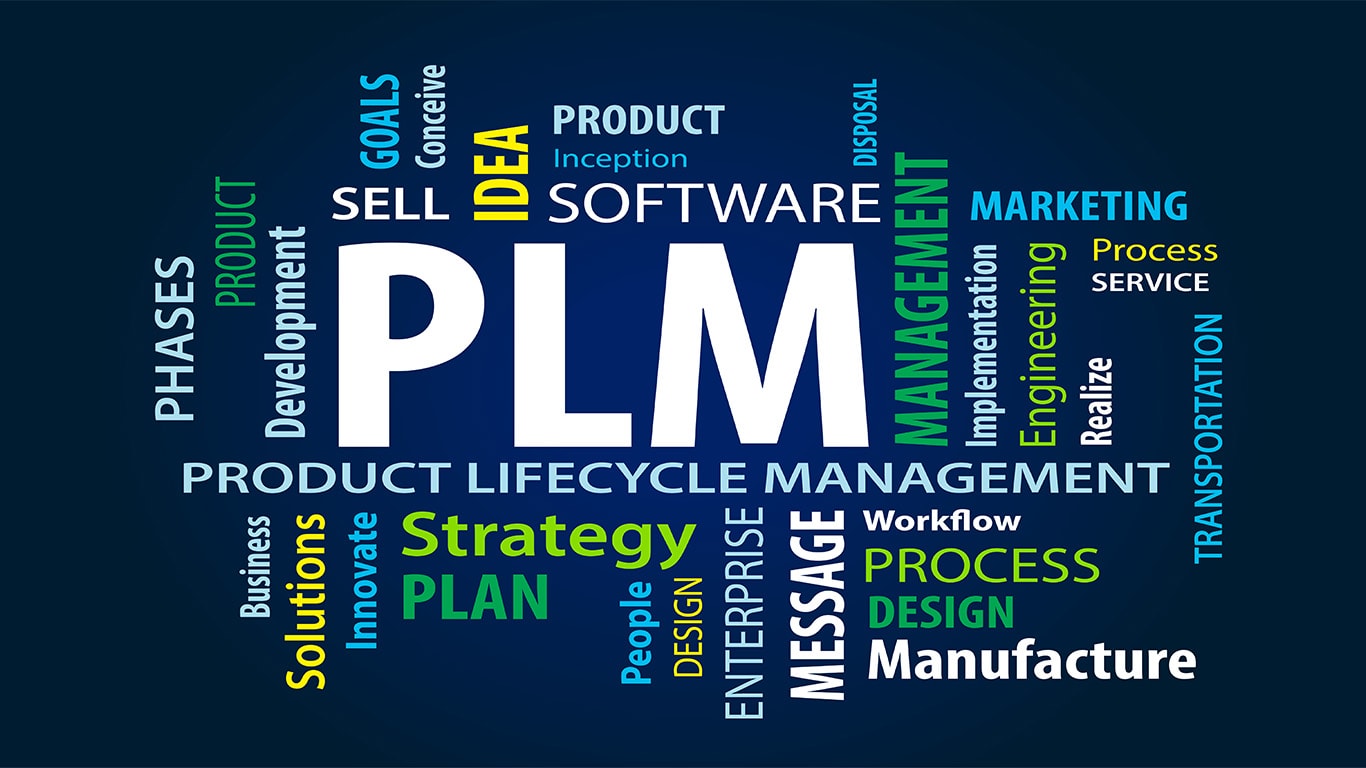
Product Life Cycle Management Overview
PLM was originally developed for the aviation and automotive industries, but it has since expanded to other industries such as packaged goods, electronics, pharmaceuticals, and fashion. Computer-aided design (CAD), computer-aided engineering (CAE), and product data management all contributed to the development of PLM (PDM). Manufacturers were able to shorten production cycles and lead times thanks to these advancements in middle design and manufacturing. Since manufacturing is a complicated process with several steps, centralizing all of the information enabled for increased competition.
Manufacturing firms are attempting to reduce waste, and in order to do so, they prepare a manual that requires them to manage their resources and people in various locations, and the procedures must be consistent. This level of cohesion also keeps the process focused on the product, giving it a greater chance of commercial success. The PLM module is useful in achieving this goal. The Stages to Overcome PLM mentioned below is a collection of the best and most widely used approaches, along with the required steps annotated. PLM has three stages, to begin with:
BOL-Beginning of Life
MOL-Middle of Life
EOL-End of Life
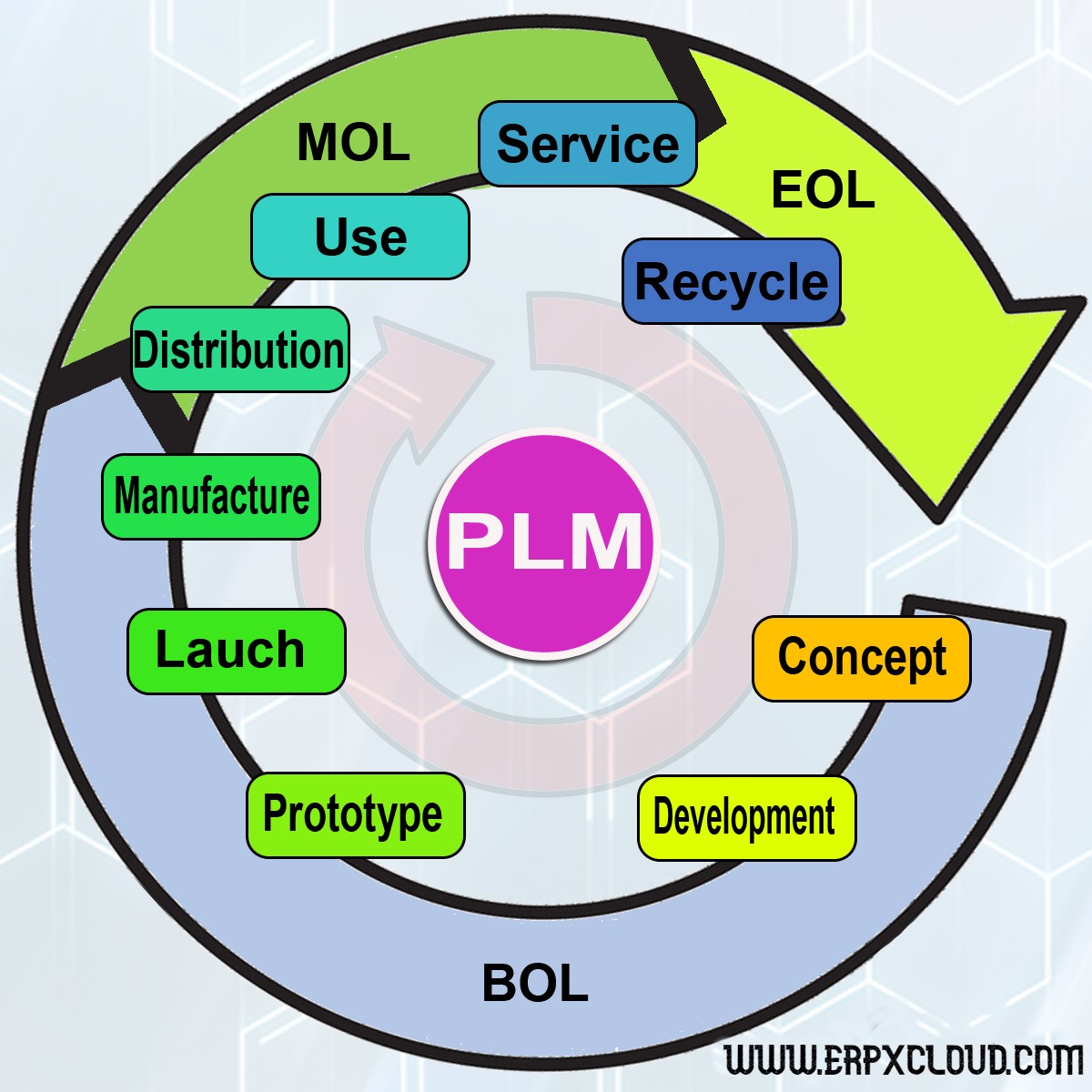
Step 1:Configuration of Odoo PLM Module
First and foremost, the PLM (Product Life Cycle Management) Module must be installed in the database.
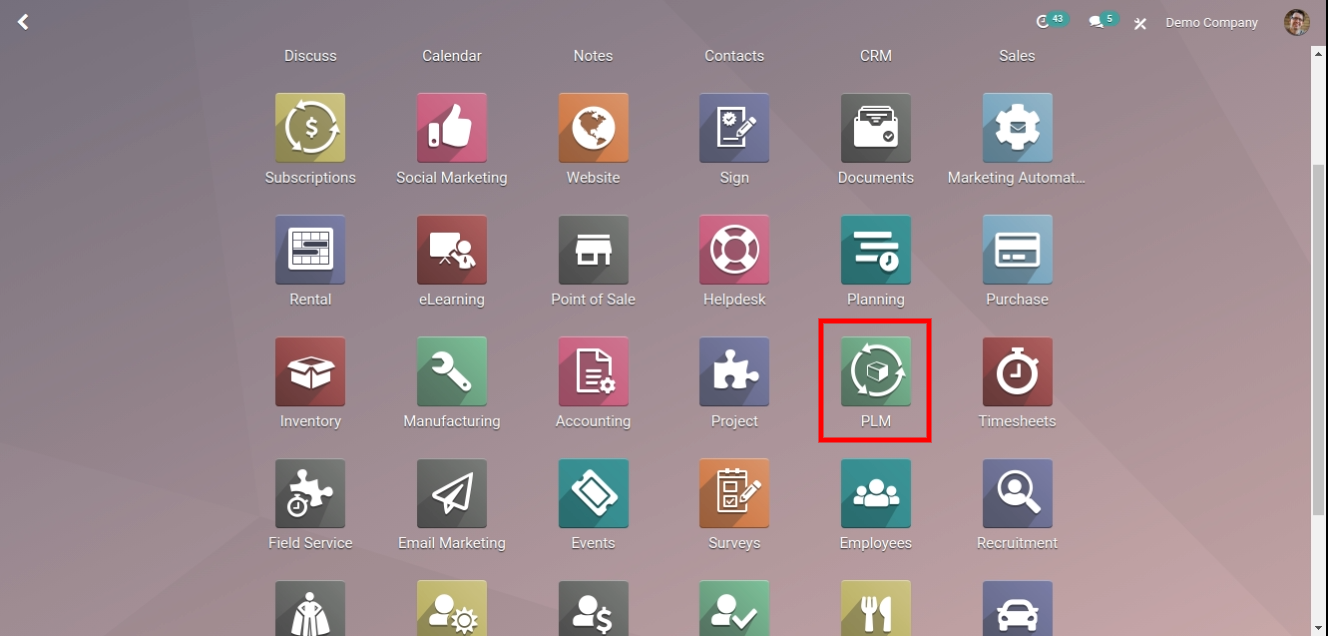
Odoo PLM is a product lifecycle management system designed specifically for engineering departments. It is used to manage Bill of Material (BoM) changes and monitor product lifecycles using Engineering Change Orders (ECO).
Step 2: Overview
We will see the summary once the module is mounted. Initially, we can see the number of ECO lifecycle counts or go to Overview in the PLM Module's menu bar.
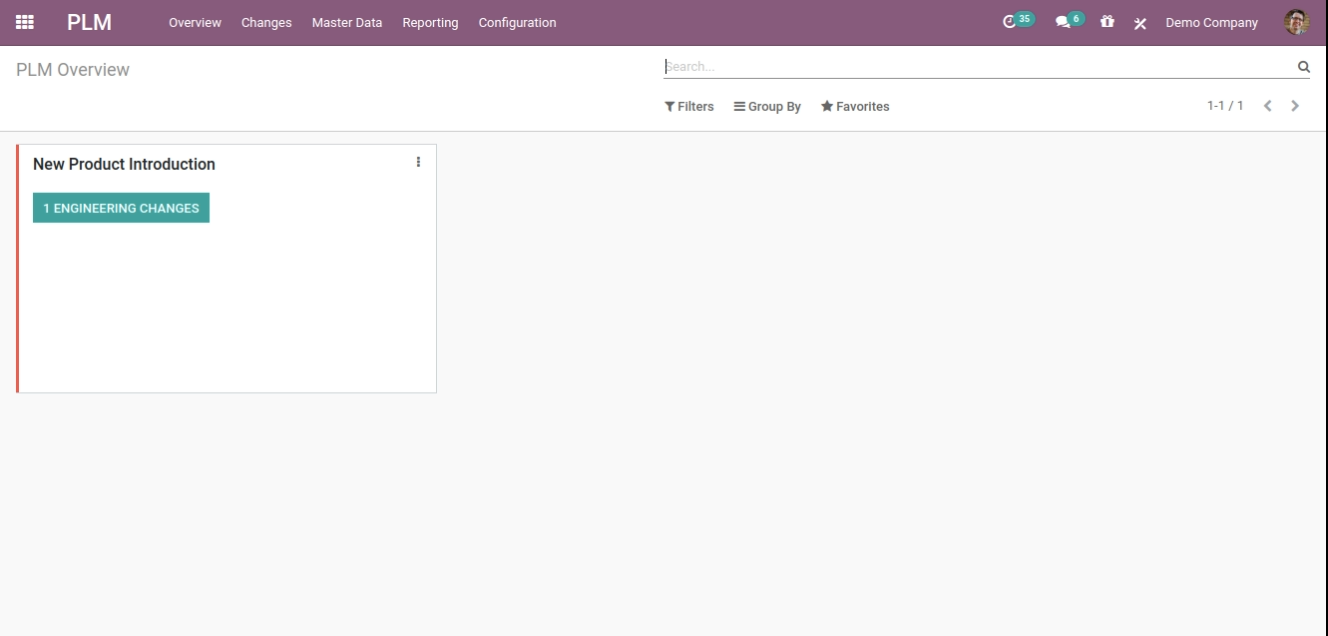
Step 3: Define ECO
Begin a new revision for ECO with a brief review of the Engineering Department's responsibilities and products. By adding columns, we can add several stages of the ECO type. This is similar to Odoo's CRM and Project modules. However, in this case, according to the configuration, an approval choice for each stage may be added. We'll go over this in more detail in the next segment.
New, In Progress, Approval, and Effective are the four stages of ECO (Engineering Change Orders) at this stage.
New: This field denotes that a new ECO is being created (Engineering Change Orders).
In progress: Engineering Change Orders (ECO) are currently in process, as indicated by this sector.
Approvals: The hierarchy admin user will use this field to set approval for a change for the appropriate officials. Stage approvals may be defined in the stage settings. Officials and approval forms can also be added here.
Effective: When ECO is confirmed, this field is used. Enable to add adjustments, final steps, and folded in Kanban view are now available as checkboxes. This is the last step.
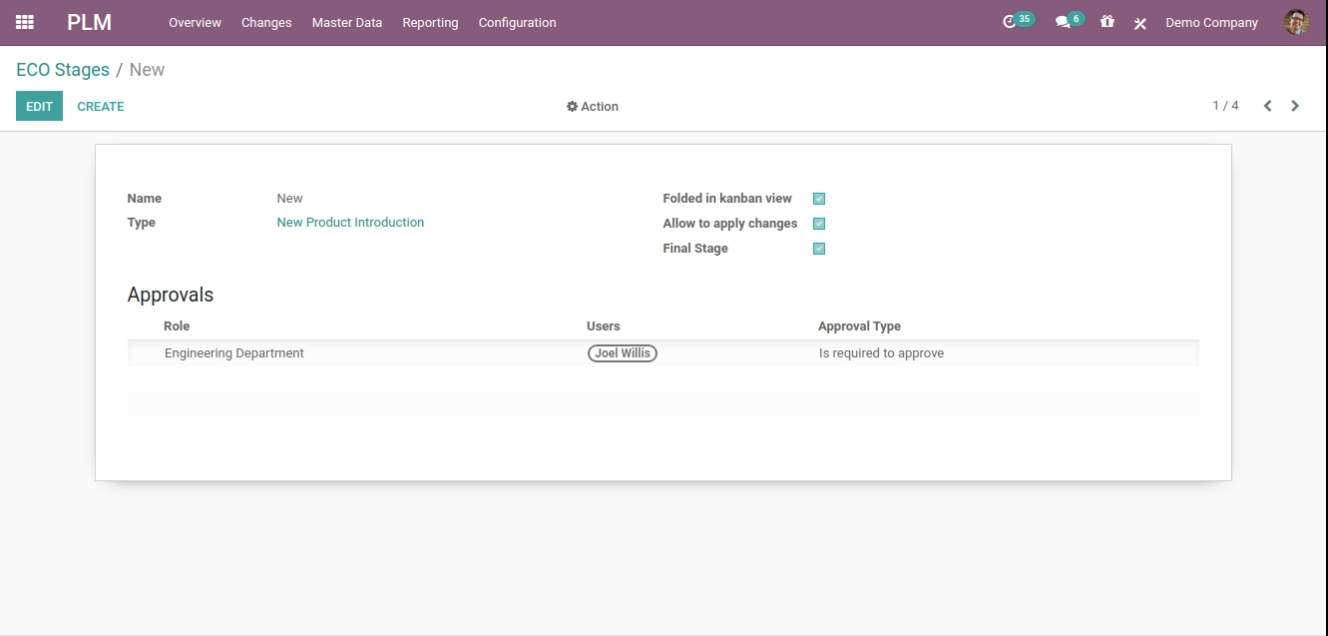
Step 4:ECO
You can now launch the Engineering Change Order in the PLM dashboard. You can fill in the appropriate fields such as
Go to the PLM dashboard and click the Engineering Change button for ECO to create an ECO (Engineering Change Order).
>>We need to include a brief summary of the change.
>>Apply on BoM, Routing, or Both for a product that we can choose based on the requirements.
>>At this stage, you can select the ECO type.
>> The date on which the changes should be implemented is shown in the Effectivity field.
After you've completed all of the necessary fields, save your changes. Click the Start Revision Button at that point.
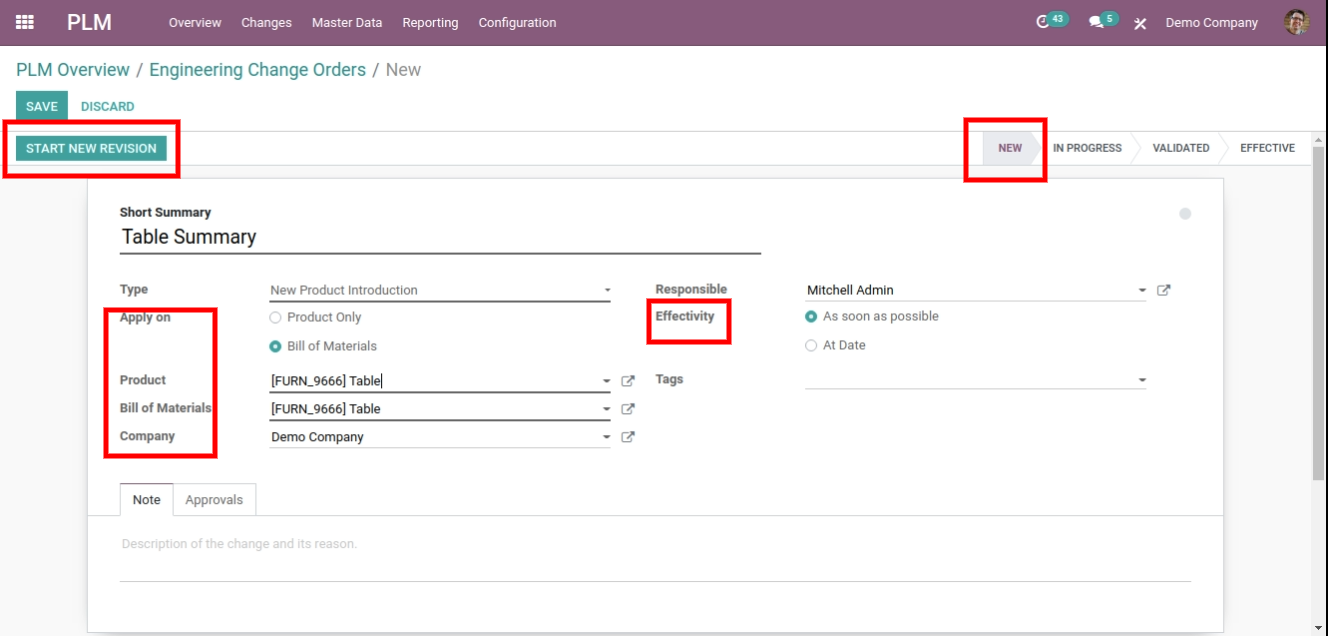
Step 5: Manage BOM Versions
As a result of this form of intervention, we now have a new revision for the Bill of Material, such as an Engineering Change Order (ECO), for which we can begin working on a new BOM. We may upload the CAD or other document to the appropriate ECO from here.
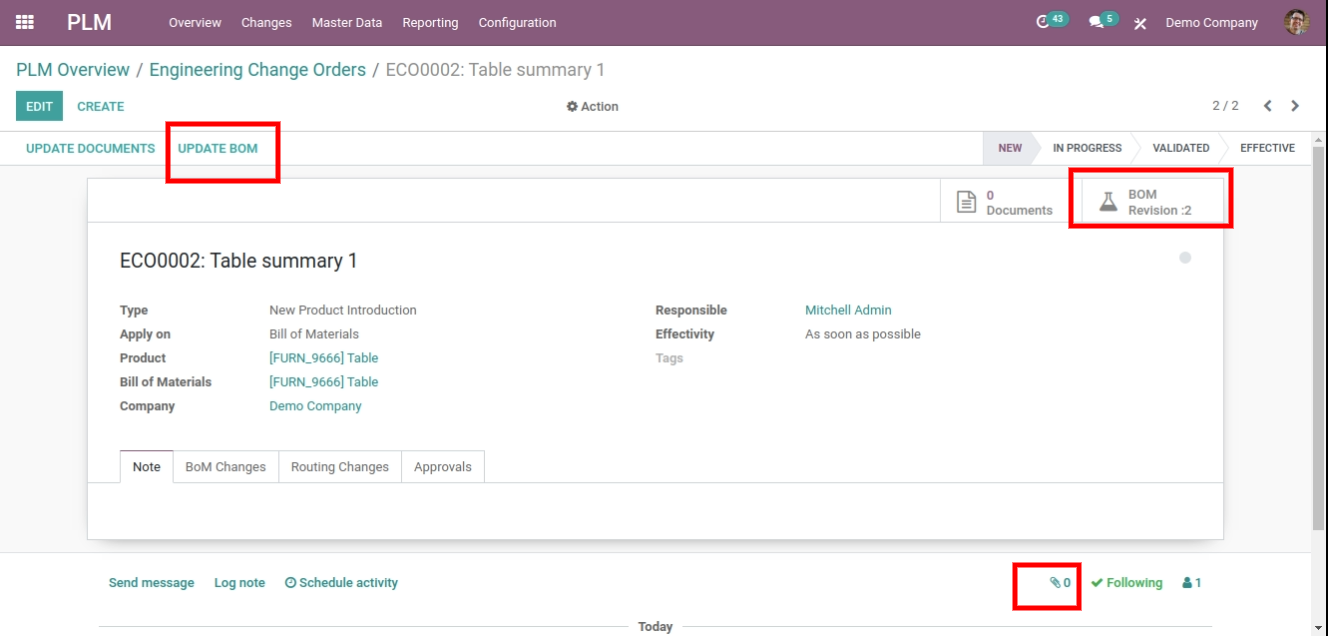
Step 6: Changing BOM
Whenever necessary, update the Bill of Materials (BoM) and add an attachment. You can then combine the two elements, and all of the modifications will be replicated in Engineering Change orders (ECO).
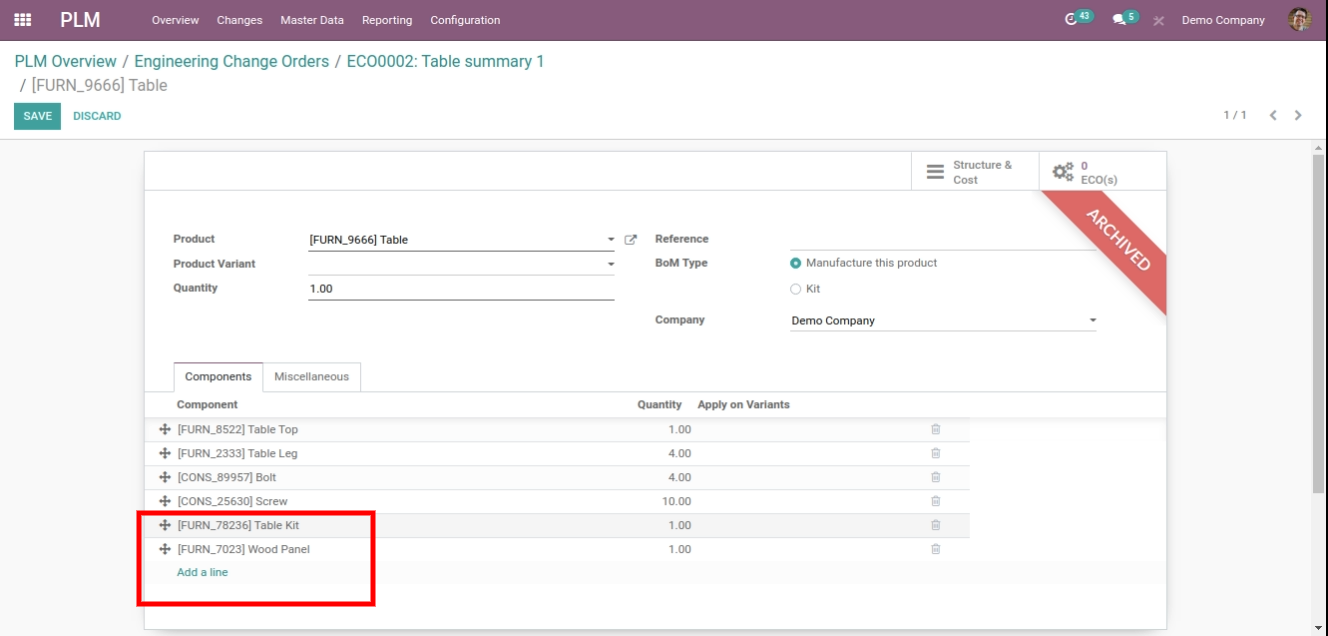
Step 7: Reflection
After two components have been added, the quantity of the existing component has been updated. Under the BoM changes tab in ECO, all of the changes are mirrored.
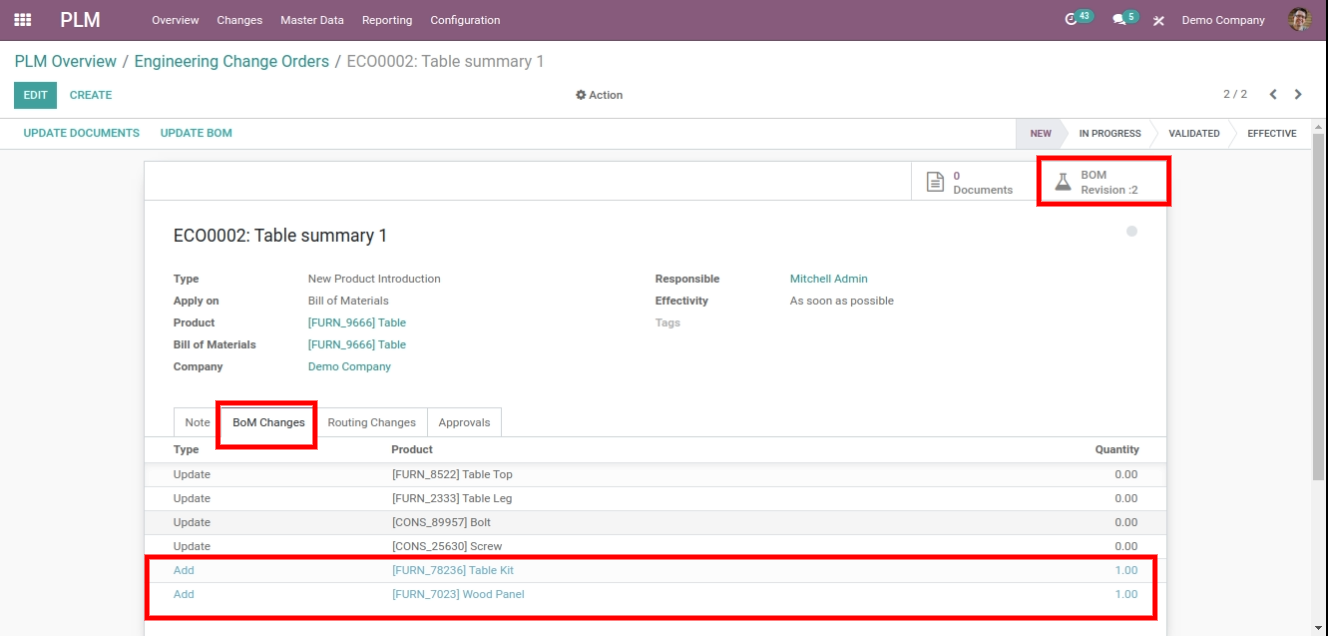
Step 8: Approving ECO
The ECO is now dragged and dropped from the In Progress stage to the Approval stage. The administrator will then be assigned to authorize the changes. After the ECO has been approved by the assigned Administrator, the Kanban view of the ECO will analyze and identify the Stages by dragging and dropping the ECO. At the same time, we can drag and drop from the Approval stage to the Effective stage.
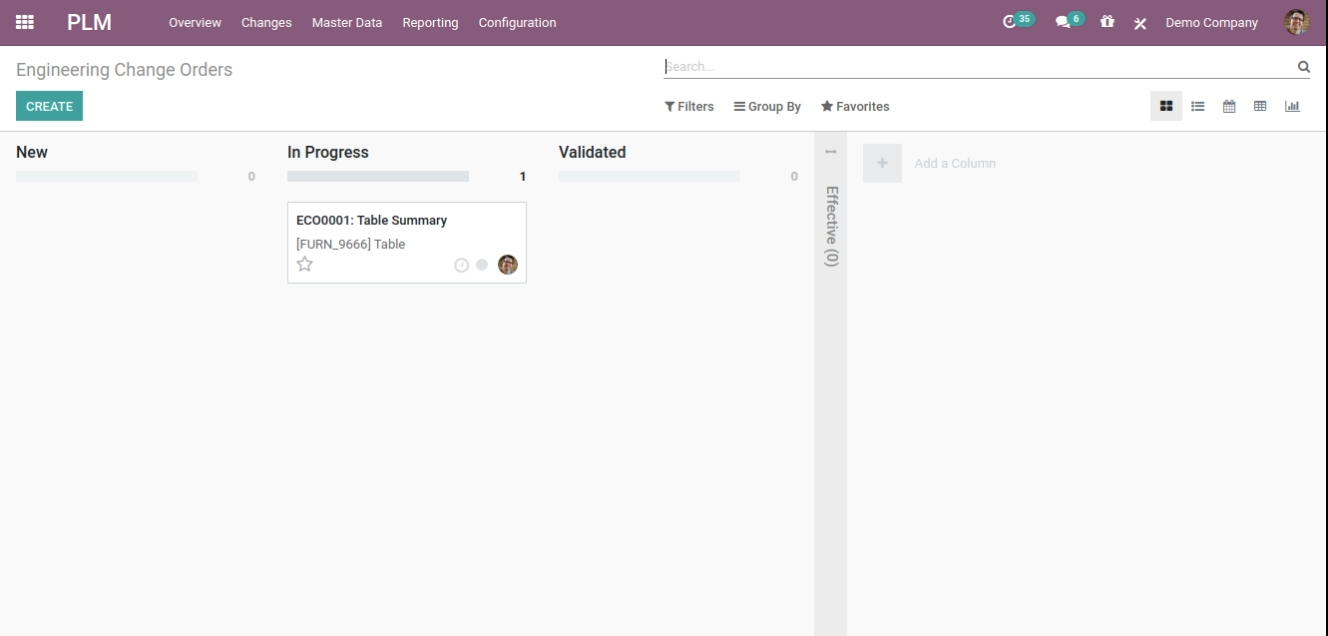
Step 9: Effective Stage
The final stage is the most important. Now we can easily drag the ECO to the Effective level, which is the same as the final stage and make similar adjustments.
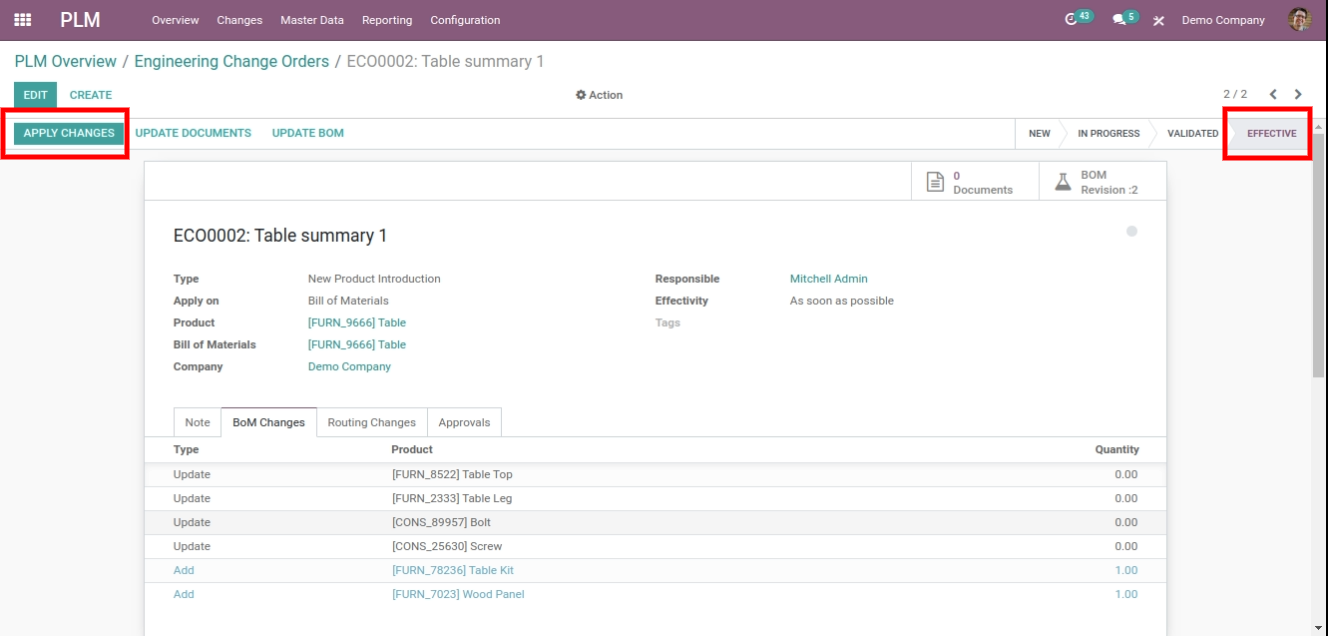
Step 10: Final Steps
Here we can see all of the BOM versions that are managed by the Engineering department.

Conclusion: Odoo PLM Module - Product Life Cycle Management
To sum it up, Odoo PLM - Project Lifecycle Management is one of the most critical aspects of the product management industry. When it comes to the development and management of any commercial product, it is critical. PLM is not only used to handle a company's engineering activities. It also supports and manages every part of the sector, from raw material sourcing to sales activities and service and repair activities.
In a nutshell, PLM is a tool that allows an end-user to schedule and control all processes involved in a product's development cycle. This development cycle aids in the reduction of market risk as well as the growth of the company through customer confidence.
We at ERP Cloud, an ERP software company, that specializes in Odoo development, customization, and services for businesses of all sizes. You would undoubtedly elevate your company by simply engaging with our team for business consultations and a variety of other services.
If you have any questions or would like more details about Odoo PLM Module, please contact us at sales@erpxcloud.com.
Latest Posts
50,000+ companies run Odoo to grow their businesses.
Join us and make your company a better place.
Odoo PLM Module - Product Life Cycle Management